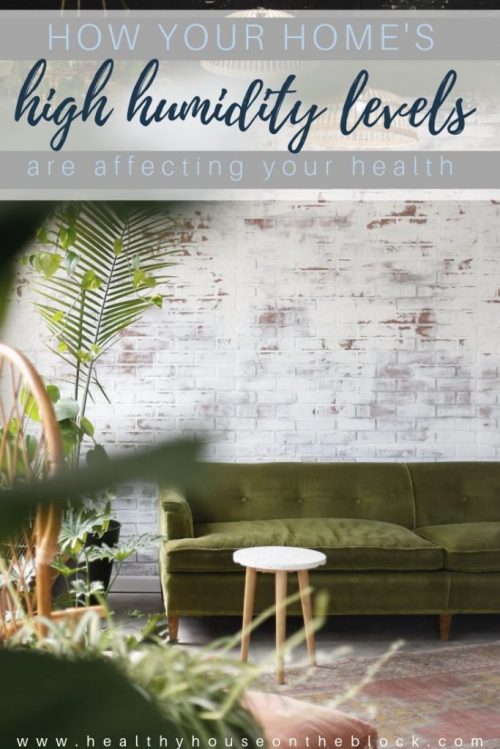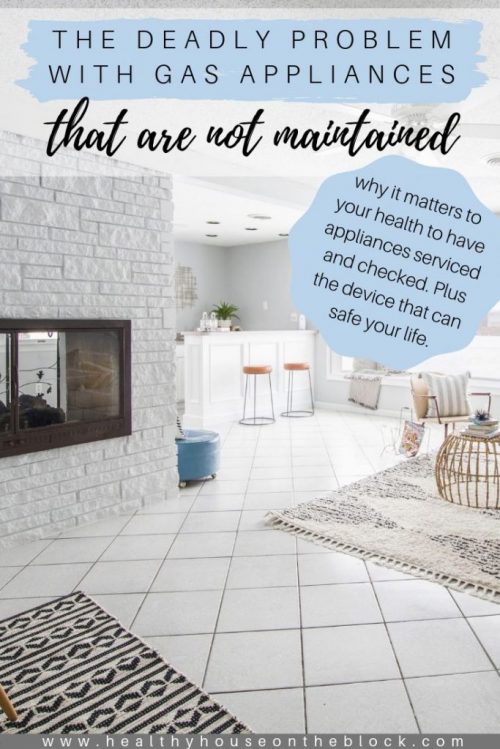
If you own your own home, it’s probably the largest asset you have. And because it is the largest asset you own, you’re probably under the impression that there are maintenance tasks you MUST do in order to take care of it. Obviously, you’re right. But our home is more than just an asset.
Our home is our escape from the rest of the world. It’s where we can not only make it feel like our own and design it to be what we want, but it’s a place we can be confident in and proud of.
Being proud of the space you’re in and truly caring for you home is sometimes a forgotten art. Our homes do require care in order to make them function properly and look beautiful. And sometimes, it means a steep learning curve as we figure out JUST what our home needs in terms of continual maintenance on it.
While I think pride in homeownership is SO important and it will give you the right attitude to work on maintenance and projects around your house, there are even bigger reasons that these tasks are important.
Our home works together as a whole, creating an environment that we feel comfortable living in. From the exterior barrier between the inside and our world to the heating system that carries warmth throughout our space. All the systems inside our home play a trivial role in creating a healthy indoor environment. And it’s these systems and elements within our house that can become an unhealthy source when left unattended for long periods of time.
All too often, I see homes where so much care is taken to improve various rooms and cosmetic elements, but the internal systems of the home are left to fend for themselves. If left long enough, they become not just an added expense to the home, but they also affect things like our indoor air quality and will eventually affect our health and our family’s health.
One of the BEST ways to motivate yourself and keep up on home maintenance is to know WHY you do something. I know for myself this is often the number one reason I continue to do anything or start a new healthy habit. For me, it’s all about knowing the exact reason something either benefits my family or my health.

YOUR HOME AS A SECOND SKIN
You may have heard me say before that our home is like our second skin. If you think about the skin on your body, it’s our largest organ. Skin is our biggest asset in terms of protection. It covers every other organ in our body and keeps them safe.
Our home is intended to be the same thing. Our home is our other largest asset in terms of protection from the world’s toxins, stress and chemicals. Houses can keep us sheltered and give us distance from these problematic areas of the world.
However, this is only the case if our home is truly protecting us. There are cases and times that our homes may actually be harboring toxins and burdening us with them on a consistent basis. It can be difficult to know or detect these toxins until they’ve completely affected our bodies.
Taking care of your home and making sure it’s a healthy second skin is key if you’ve decided to create a safe-haven from the rest of the world.

MOISTURE & HUMIDITY
Many tasks in terms of home maintenance are preventative. And preventing moisture intrusion, or leaks in your home can save you from some really big problems in the future. Leaks can come from your plumbing lines and systems, or it can come from the exterior of your home. Both of these ways water infiltrates the home can be both unseen and can cause a lot of damage.
There are obvious reasons we want to avoid leaks in our home. Reasons like damaging drywall, flooring, or your ceiling is a huge one. No one wants to deal with that type of headache. But even more is that water seeping into your home from plumbing or the exterior can cause a breeding ground for mold and bacteria within your home.
Once mold starts, you’ll find it can end up being a very long battle to completely eradicate it. This is why there are professional companies who remediate mold — because it can take a professional to do really get to the root and properly remove it once and for all. Often times you may not even know that mold has started growing, especially if your moisture or water is coming from somewhere inside a wall or other area that is not easily seen.

Toxic mold anywhere within your home can contribute a wide array of health issues, including depression and other physical health problems.
You can learn more about toxic mold here if you’re concerned about your own home.
Keeping an eye on leaks throughout your home is a huge part of keeping your home healthy. In my Seasonal Home Maintenance Checklist, you can get a complete list of what to check, have serviced or maintained throughout the year.
Raising the internal humidity levels is another way your home can become an unhealthy space. Things like leaks can cause a rise in humidity levels, as well. Humid homes breed mold and bacteria. But they also house excessive dust mites. Humidity levels higher than 40% can cause home environments where illness runs rampant. Often times humidity levels rise due to blocked ventilation, bath fans and kitchen fans not running properly and water leaks.
If you’re looking to keep the perfect humidity level inside, this blog post will help you do so with minimal work or cost.
The great news is these are all preventable maintenance items that can be checked before they cause problems.
COMBUSTION GAS
Combustion gas, or carbon monoxide are deadly in even small amounts. If you have any gas burning appliances in your home (gas fireplace, gas stove, water heater, dryer, furnace or boiler), you want to make sure you’re taking the proper precautions. All of these appliances listed may use natural gas to create the heat necessary for the appliances use. When gas is burned to create a flame, or combustion, it needs to get rid of the combustion gas, which holds CO2 (carbon monoxide).
This is why vents are necessary above gas stoves and other gas appliances have direct vents to the exterior of your home. It’s for safety! If these gas appliances are not serviced and the venting is not checked to ensure there are no holes or blockages, carbon monoxide can infiltrate your home and cause not only health problems, but death as well. This study showed that prolonged exposure can cause neurological damage as well as a variety of other long term health effects that reduce the quality of life. Large amounts of CO2 can cause death.
Carbon Monoxide is odorless and you cannot see it, making it very difficult to know if it’s in your home at all. This is why it is required in that homes be equipped with carbon monoxide detectors on each level, especially near bedrooms and sleeping areas.
Keeping up on your routine maintenance and service calls for your gas appliances is going to be extremely beneficial in reducing your risk for CO2 in your home. In addition, you’ll also want to make sure your carbon monoxide detectors are working by testing them every six months.

REDUCE YOUR ENERGY USE
The reasons for reducing your energy use at home might be to save you money, or it might be to save our earth’s resources. Or maybe it’s a combination of those two things. Either way, it’s beneficial all around to minimize your energy use.
Maintenance like sealing up cracks and holes in your exterior, checking your window seals and keeping weatherstripping in place around doors are all great way to minimize heating and cooling costs.
Other maintenance that can help is having your heating, cooling and water heating system checked and serviced every 2-3 years to ensure it’s functioning properly and efficiently. When these systems are inefficient and working really hard, they not only cost you extra money, but you also use more of the earth’s energy.
These are just simple, routine maintenance items that if put on a calendar, won’t be easily forgotten about. And the more they are maintained, the longer the time period is between replacing elements of the appliance or doing large maintenance projects.
This post all about green living and how it can save money at home is a great start to get an idea of HOW our energy use affects our bank account and our homes.

DUST
If you’ve read a few of my blog posts or Instagram posts, you know that dust is more than just a nuisance. Dust usually contains not only chemicals from products around our home, but it can also contain pesticides, bacteria and viruses from the outside. This is why keeping dust to a minimum is always best. This post about dust in your home can help breakdown just what is in our annoying house dust.
And did you know that dust can be minimized by a few simple routine maintenance projects? YES! And these are the easy projects that you won’t need a lot of materials or tools for. Projects like replacing air filters in HVAC units, or cleaning filters in heat recovery ventilators can be one of the best ways to minimize dust. Another project is vacuuming and cleaning window screens. Dust ends up collecting on the screens over the spring, fall and summer and eventually enters your home when you open up the window or sliding door.
While dusting on a regular basis isn’t exactly maintenance, it certainly is a worthwhile routine to get into to help minimize dust that ends up floating around the house. Dusting things like vents and grates is also a great way to prevent dust from spreading around your home.
This post about spring cleaning has an area all about wet-dusting your house to prevent dust.

UNSEEN COSTS & STRESS
Let’s talk about how unhealthy stress is for a moment. We all know that suffocating feeling external pressures and how it can make us feel internally distraught. It can disrupt our workflow, our inner peace and cause us to have very irrational feelings about what’s really going on.
This constant stress, even if low-grade, eats away at us and can really cause problems with our physical bodies as well. It’s very well known that stress reduces our quality of life and life expectancy, and anywhere we can avoid it, or deal with it positively is going to be beneficial.
Finances and unexpected costs that come up in relation to our stress can be very high on the stress level scale. If suddenly your furnace goes out and you need to pay thousands of dollars to replace it, you could imagine that your stress levels might be elevated. Probably for most of us, this stressful feeling would sky rocket our nerves if this was dropped in our lap.
Routine maintenance can not only prolong the life of appliances, but it can also give you a good idea of WHEN to expect a full replacement. This way, at least you can put money aside or be mentally prepared for that expense when it comes up. This is a great way to reduce stress levels about what’s needing to be updated and when in your home.
HOME MAINTENANCE WORKSHEETS
While it’s easy for me to tell you how important it is to take care of specific areas of your home that are working systems, it can be daunting to know HOW and WHEN to take care of these things. This is exactly why I’ve created my seasonal checklists. This breaks down your home tasks by season and helps you get an idea of the items you should be checking on a semi-regular basis.
You can download yours in my free Online Resource Library where you’ll get access to the Seasonal Maintenance Checklists and many other free resources.




